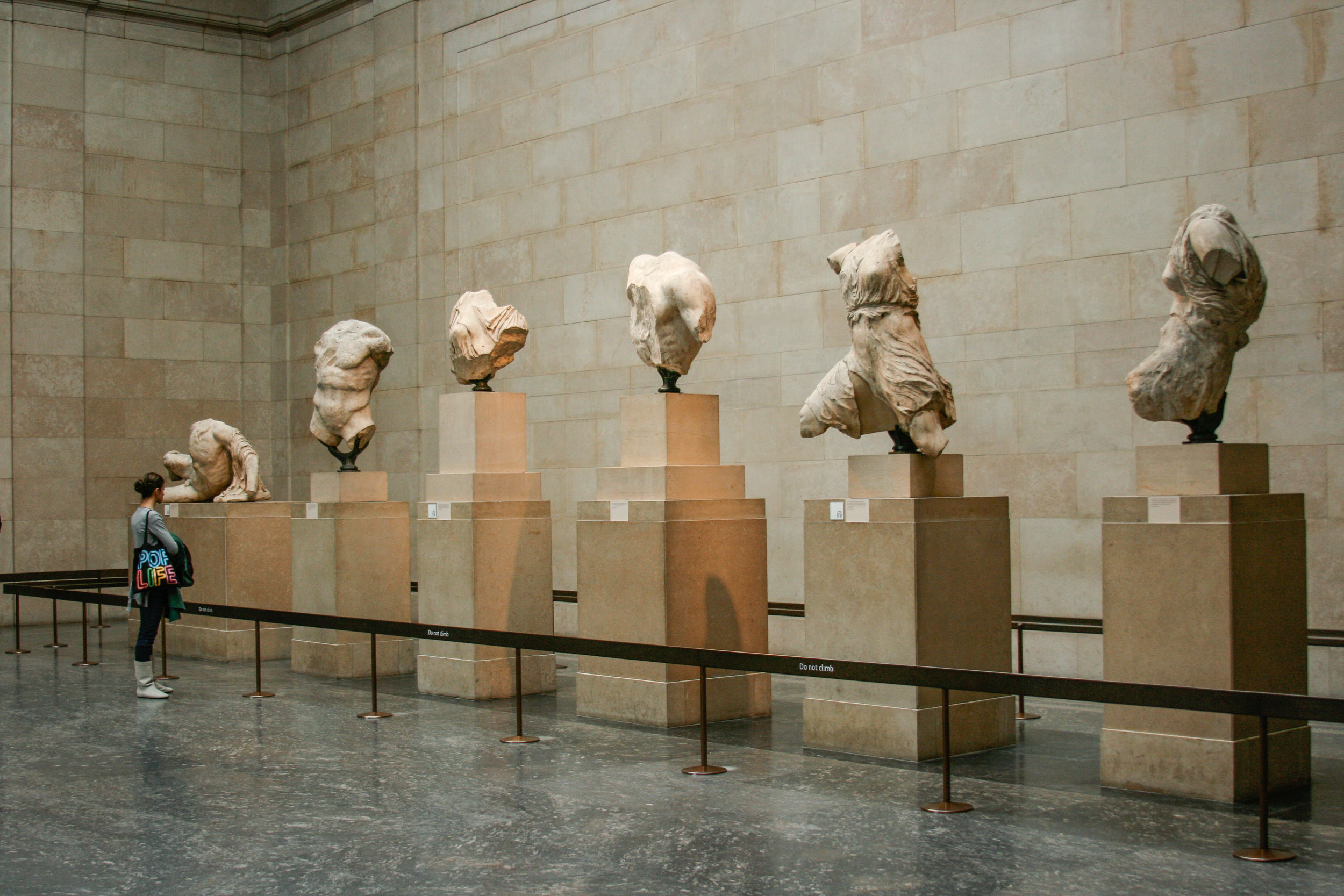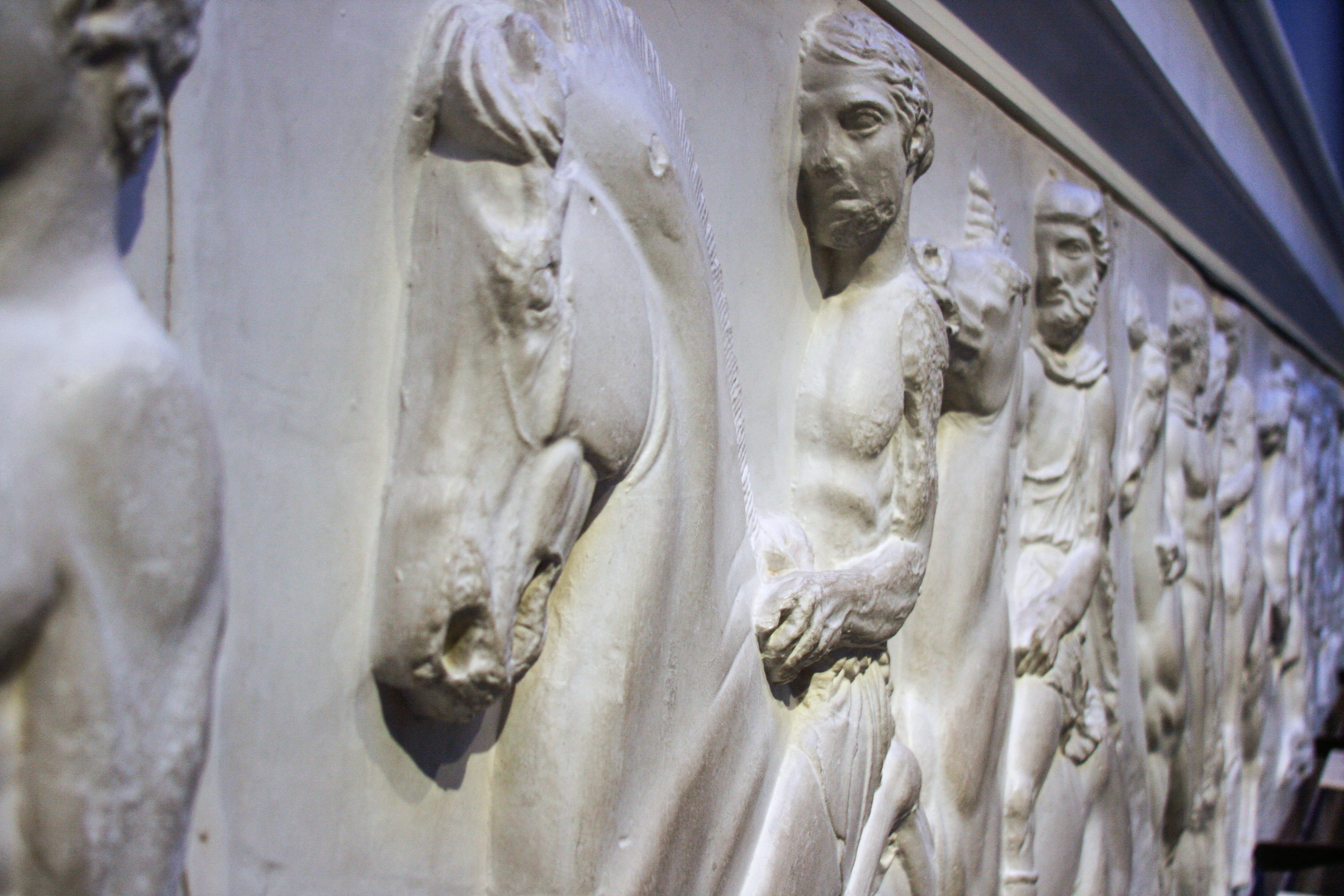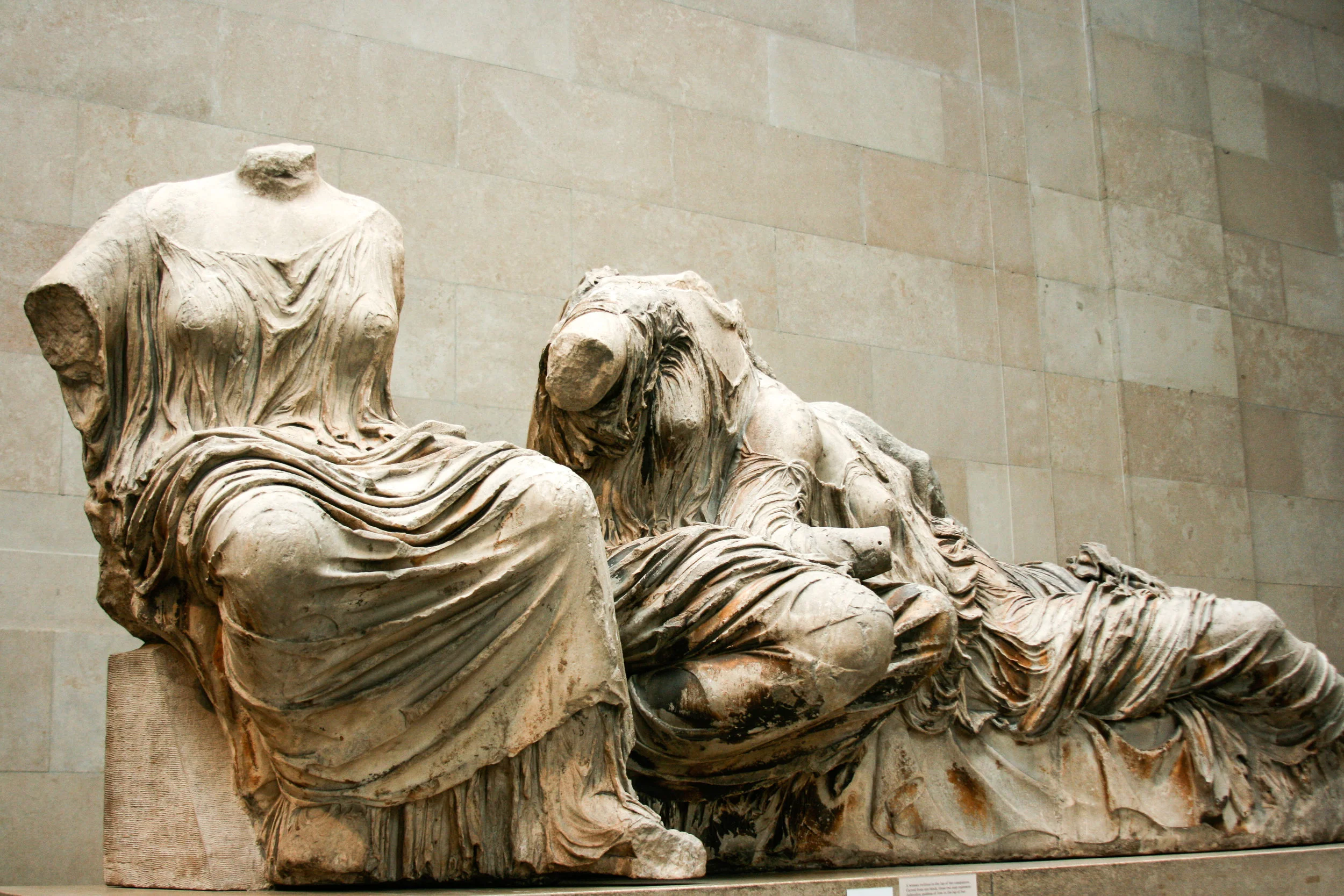The Elgin Marbles at the British Museum
Archaeology or Thievery?
For nearly two hundred years the Elgin Marbles have inspired just that question -- one which is provocatively unanswered today.
The Elgin Marbles, a collection of marble adornments from the Parthenon in Athens, were collected by Lord Elgin between 1801 and 1805. Thomas Bruce, known as Lord Elgin, an impoverished British noble, took a post as ambassador to the Ottoman Empire in 1799. Like many of his era, Lord Elgin was an admirer of the classics, and he ventured to Athens, then part of the Ottoman Empire, to see the works of the ancient Athenian artists.
In the absence of photography which had not yet been invented, Lord Elgin did what most European classics enthusiasts did at the time: he hired artists to sketch and paint the ruins so that he could take home the images. He also hired workers to make plaster castings of many of the marbles from the Parthenon so that artists in London might study them without venturing to Athens.
After intervening with the British Parliament on behalf of the Ottoman Empire, Lord Elgin was also awarded a letter of instruction which allowed him to “take away any pieces of stones with inscriptions or figures.” This he did liberally -- loading up warehouses and ships with the friezes and figures from the Parthenon.
Now, that is not to say that the Parthenon as Elgin found it was whole and untouched. Far from it. Athens’ temple had been Christianized in the 5th century A.D. And during the 17th century it was used to house explosives -- some of which exploded causing the building’s roof and part of the colonnade to crumble. Besides, Elgin was not the first nor the last to remove pieces of the Parthenon away to museums and private collections. The great works of the Parthenon are now housed in several museums all over the world.
Of course the questions are far larger than just what happens to the Elgin Marbles. After all, in the center of the British Museum’s soaring new atrium stand several totem poles from the Pacific Northwest... and what about the entire Egyptian collection? Or the collections of other museums around the world? Egypt, for example, is making demands of several museums asking for ancient artifact to be returned.
Those are questions for another day... suffice it to say that the Elgin Marbles are just a fraction of the British Museum’s collection. Indeed, the museum holds more incredible artifacts from ancient Greece, Rome, and Egypt in addition to their collections from Asia, the Middle East, North and South America, and Africa. A visit to the British Museum makes your trip to London a voyage out into the world as well.
The British Museum
Great Russell Street
London, England
WC1B 3DG
http://www.britishmuseum.org
Tel: +44 (0)20 7323 8299
Fax: +44 (0)20 7323 8616
information@britishmuseum.org
Further Resources:
Who Draws the Borders of Culture? by Michael Kimmelman(May 4, 2010 in the New York Times) a great discussion of the issues of repatriation as being played out by several governments and museums
In Athens, Museum is an Olympian Feat by Anthee Caravassea (June 19, 2009 in the New York Times)
Stealing Athena: A Novel by Karen Essex: a fictionalized account of Lord and Lady Elgin’s years in Athens and Constantinople. A great read!
Mistress of the Elgin Marbles : A Biography of Mary Nisbet, Countess of Elgin by Susan Nagel: a biography of Mary Nisbet, Lord Elgin’s wife











